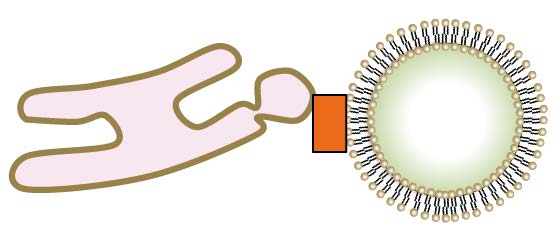Detail Information of Protein
Basic Information:
| Symbol | STARD3NL |
| Synonyms | MENTHO; UNQ855/PRO1864 |
| Protein Name | STARD3 N-terminal-like protein (MLN64 N-terminal domain homolog) |
| Species | Human |
| Entrez ID | 83930 |
| Uniprot ID | O95772 |
| Membrane Contact Site |
ER-Endosome; Endosome-ER

|
| Location (from literature) | Endosome |
| Cell line/Tissue | HeLa cells; HEK293T cells |
| Experimental Method | Low throughput experimental methods |
| Protein Sequence | |
| More related results |
Complex Information:
| Complex ID | Subunit of complex | Subcellular location | Species | More |
| CMCS00013 | MOSPD2; STARD3NL | ER-Endosome; Endosome-ER | Human | more | CMCS00024 | VAPA; VAPB; STARD3NL | ER-Endosome; Endosome-ER | Human | more |
Expression Overview of STARD3NL:
Homology Information of STARD3NL:
| Uniprot ID | O95772 |
| EggNOG | KOG3845 |
| HOGENOM | / |
| OrthoDB | 3740290at2759 |
| TreeFam | TF313869 |
| GeneTree | ENSGT00940000155476 |
References:
| Pubmed ID | 24105263 |
| DOI | 10.1242/jcs.139295 |
| Description | STARD3 or STARD3NL and VAP form a novel molecular tether between late endosomes and the ER. |
| Description of experimental evidence | The protein was validated by immunoprecipitation, electron microscopy, immunofluorescence, in situ proximity ligation assay, mSDS-PAGE and western blot analysis in HeLa cells. |
| More related results |
| Pubmed ID | 29858488 |
| DOI | 10.15252/embr.201745453 |
| Description | Consequently, MOSPD2 and these organelle‐bound proteins mediate the formation of contact sites between the ER and endosomes, mitochondria, or Golgi.; ll these proteins, by binding VAP proteins, are known to build contact sites between the ER and endosomes (STARD3, STARD3NL, ORP1L), mitochondria (PTPIP51), and Golgi (STARD11). |
| Description of experimental evidence | The protein was validated by immunofluorescence, colocalization analysis, SDS–PAGE, western blot, coomassie blue staining, pull‐down assays, GFP‐Trap, mass spectrometry analysis, electron microscopy and immunoprecipitation in HeLa cells and HEK293T cells. |
| More related results |